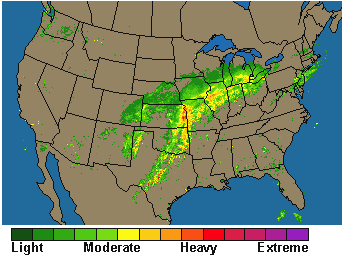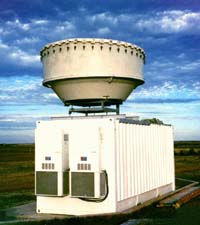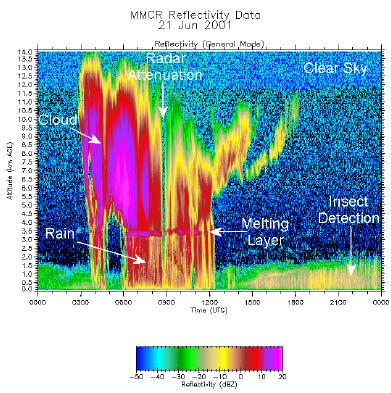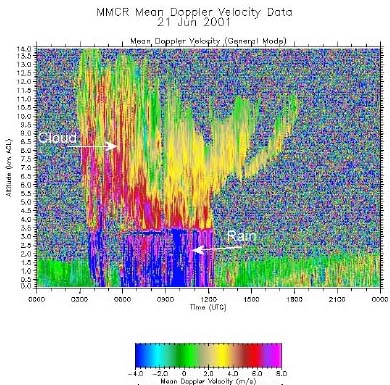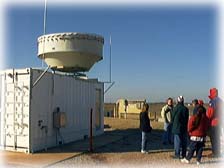
|
Tools of the Atmospheric Scientist Lesson #2 - Vertical Cloud Radar |
|
|
|
Target Level - Middle School/Junior High
|
2. Go to the ARM Southern Great Plains data site for MMCR and open the 1/29/02 radar images for both velocity and reflectivity. 3. Using colored pencils, markers, or crayons, carefully color the cloud image shown in each picture on the blank sheets. Color in the reflectivity image on the reflectivity blank sheet and the velocity image on the velocity blank sheet. Avoid coloring the background in each image. 4. Open the larger view for each
radar example shown above. Attempt to match and label each
feature identified in the two samples with those your
1/29/02 radar images. |
|
Interpreting the
Data 2. At what altitude does the melting layer seem to appear in each image (km)? 3. Using the time scale along the bottom of each radar image (expressed in Universal or Zulu time) determine the time the cloud first appeared over the radar site. 4. At what time did it last appear over the radar site? 5. Determine how long it took the cloud to pass over the radar site. Congratulations! You have taken another step in understanding how meteorologists use atmospheric data to help monitor and forecast the weather. |
|
National Science Education Standards Annotated by MCREL (Standard - Level - Benchmark) Standard 1. Understands atmospheric processes and the water cycle: 1-III-1, 1-III-2, 1-III-4, 1-III-6 Standard 9. Understands the sources and properties of energy: 8-III-8, 8-III-9 Standard 11. Understands the nature of scientific knowledge: 11-III-2 Standard 12. Understands the nature of scientific inquiry: 12-III-1, 12-III-5, 12-III-6, 12-III-7 Standard 13. Understands the scientific enterprise: 13-III-3 |
Return to Tools of the Atmospheric Scientist
